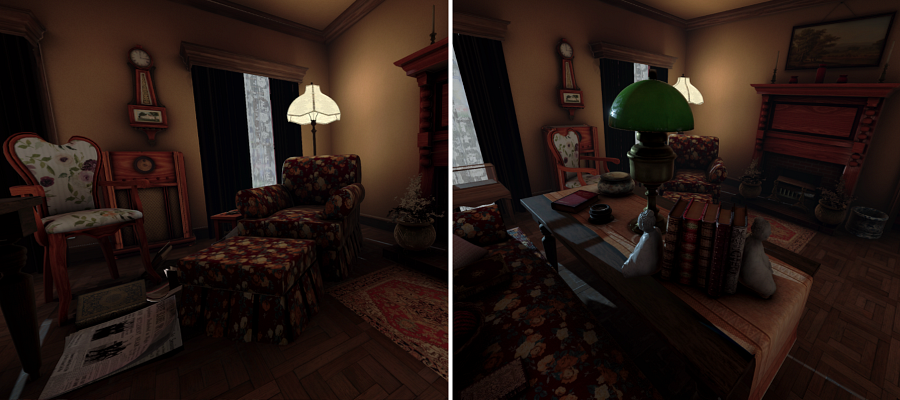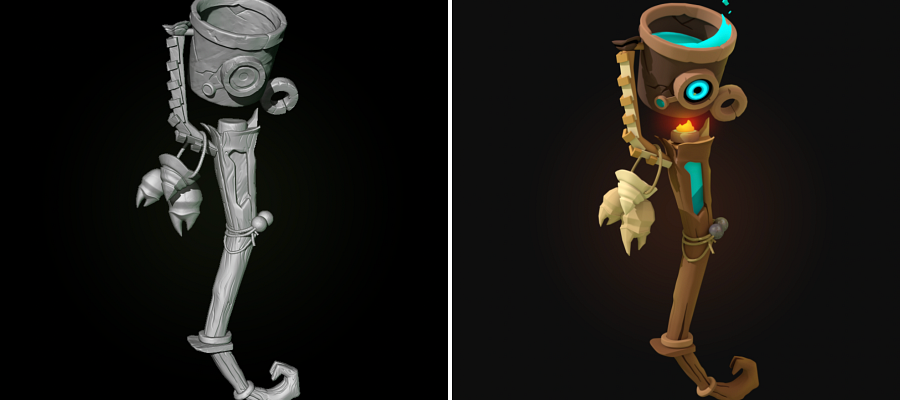Growing up watching anime and playing video games, Eduarda Mariz, a 2016 graduate of our Game – Art program, turned to the likes of Final Fantasy Tactics, Tomb Raider, King's Quest, and Pokémon to not only help her and her brother learn English but to help her practice drawing – something she discovered she had a great interest for early on.
“At first, I wanted to make comics, but after I started graphic design in Brazil, I learned how big the game industry is, the many opportunities for exploring art there are, and how interactive it is, and I fell in love with the possibility of making my art interactive. I love making characters that players can interact with and exploring how I can make stories more immersive. I think video games are a medium where I can explore all that,” she shares.
Fast-forward to today, and Eduarda is a Character Modeler at Mainframe Studio, an animation studio based in Vancouver. From playing games to helping create them, there have been experiences along the way that have helped direct her to her career, one of those being moving to Canada and starting at Centennial.
“I've always wanted to come to Canada. When I was younger, there were a lot of programs in Brazil to come here, and Toronto has a lot of game companies, so I knew I wanted to study here. After finishing my graphic design degree in Brazil, I started planning to move and learn more about game art. Centennial stood out to me first because the curriculum seemed more hands-on and the teachers were seasoned professionals that worked in big studios like Ubisoft and Pixomondo, so I was sure they knew what they were talking about,” she shares.
Looking back at her time in the program, one of the components she enjoyed most was the lab availability, where students could work around the clock. This is where she says she spent more of her days working on assignments and watching tutorials, which many other students did, helping to build a greater sense of community and sharing knowledge. Eduarda adds that the collaboration between students, especially when researching topics related to the program and helping each other with assignments, was extremely helpful. “It was great to also prepare for when you receive a task at work that you're not too familiar with, and you have to ask your coworkers or look it up online. Being able to figure out things by yourself and come up with new techniques is very important in my opinion,” she says.
As for the key lessons that she took away from the program, Eduarda shares, “The biggest lesson for me was to plan ahead, something one of our teachers would say a lot. In 3D art, there are many paths we can choose to follow, such as modeling, texturing, lighting, characters, props etc. The software is always updating, new ones are released, and it's really easy to get overwhelmed and not know what to focus on.”
She continues, “plan ahead, to me, means how I should make an action plan to get where I want to be and what steps I need to take to get there. I know I like modeling and texturing, so I'm focusing on improving my skills in this area, learning the new software that studios use and new techniques to be more efficient, and like this, I can get where I want to go.”

After graduating from Centennial, Eduarda worked at a small studio Interactive Research Labs as a 3D generalist on the game ChefU. “It was a very small team, just two artists and two developers, so I had to figure out a lot of things on my own and I learned a lot about art for games, Unity, and modeling for VR,” she explains.
During an Industry Night event hosted by Centennial, where alumni could network with studios around Toronto, Eduarda met the Art Director and recruiter from the game studio WGames. She shares, “I got a job there as a 2D/3D Artist, first designing casino games and then later moved to more technical art responsibilities with their app, Neverland Casino. It was an amazing opportunity to learn more about Unity and develop my skills as an artist. The team was much bigger, too, and everyone was fun to work with.”
When the pandemic hit and many studios moved to a remote workplace, many began hiring throughout Canada, and that is when Eduarda landed the job she is at today at Mainframe Studios. “Moving from games to animation was a big change. I had to learn a different pipeline from the games I was working on before, and the quality of the work they expected pushed my art a lot. It's an amazing project; I work with many talented artists, and we learn from each other daily,” she explains.
As a Character Modeler, Eduarda’s day begins by checking what her assigned tasks are and completing said tasks. Around mid-day, she has a team meeting to discuss the status of the different tasks everyone is working on. “After that meeting, I go back to my tasks. If I have issues, I ask my supervisor or coworkers, and some days I have other meetings with production if they need anything. This studio is pretty good with work hours, as long as we finish our tasks, we can manage our time, so I like to take breaks to play with my cats and stretch – it's good to keep our body moving!”
Eduarda says the project she is currently working on is her favourite so far. While she cannot say much about it, she points out, “It's an extremely complex animation, beautifully designed, and everyone is working hard to make it. I'm so happy to be part of this team! It's such a fun project!”

While continually progressing, the gaming industry has been heavily male-dominated – something Eduarda has noted. Reflecting on this and the industry in general, she shares, “The game industry is huge, and now there are many tools we can use, so I feel like there is so much content being created that players play a game for a bit and then never again. The more successful games have more replay value and games that use the players' creativity. Unfortunately, because games have been male-dominated for so long, we experience a lot of sexism in this industry and the workplace. It's tough sometimes, but more women join the industry every year, and it's slowly changing.”
As for advice to those starting in this industry, Eduarda says, “It's a very tough industry to get into; there's a lot to learn, many software to be familiar with, and you need to be constantly improving your skills, so be certain that that's what you want to do. To work in AAA games, like the ones from Ubisoft or Sony, you need to practice every day and live your art, so be ready to give your blood, sweat and tears.”
She adds, “If you like to make art, keep going. It’s very tough, but it will get better in the future.”
You can find more of Eduarda’s work via her portfolio and her Instagram @arxamiart, where she posts “behind-the-scenes” content about her process.
Eduarda’s journey in this industry is phenomenal, and we are thrilled to follow along as her creativity and skills continue to shine through her work.
Article by: Alexandra Few
Check out and subscribe to our Storyteller newsletter to read all the other great stories happening in and around the Story Arts Centre.
